Rose Pomponella
Pomponella is a German-bred Floribunda rose variety. Released in 2005. Introduced by W. Kordes & Sons "- a company engaged in the selection and production of roses.
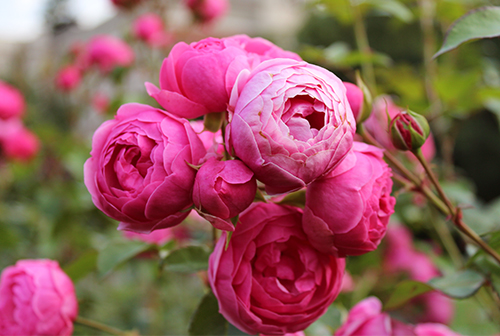
Pomponella gained its popularity not only thanks to the fabulous flowers, but also due to its unpretentiousness and resistance to many diseases.
Branched bush, lush, with strong vigorous shoots and dark green shiny foliage. Bush height 70 - 185 cm, width 60 - 160 cm.
The flowers are bright pink, fragrant, densely double (80 - 85 petals in one bud), 4 - 5 cm in diameter. The shape of the flowers changes during flowering from a conical bud to a spherical one. Roses resembling pompons are collected in inflorescences of 5 - 15 pieces per stem. Abundant flowering from late spring to early autumn.
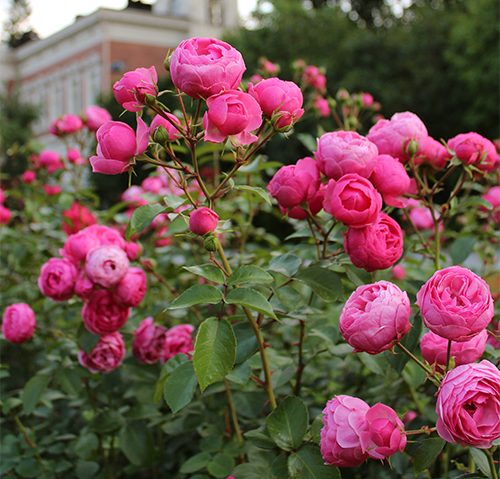
Unfortunately, from the summer heat, these roses quickly open and fade to a dirty pink hue. But they perfectly keep their shape even in pouring rain, without crumbling. Due to the severity of the buds, Pomponella's stems often lean to the ground, so flowering bushes need to be tied to supports (for example, bamboo).
In the autumn, as well as on a fine summer day, you can contemplate the beauty of these flowers, because it is in cool weather that they acquire an ideal shape, and the hot sun during this period does not dry out delicate petals.
It is advisable to plant a Pomponella rose from the southern side of the site (south, southeast, southwest). The landing site should be well ventilated and protected from cold winds. Also, the plant feels comfortable in partial shade. This variety prefers fertile, neutral or slightly acidic soils with good water retention capacity.
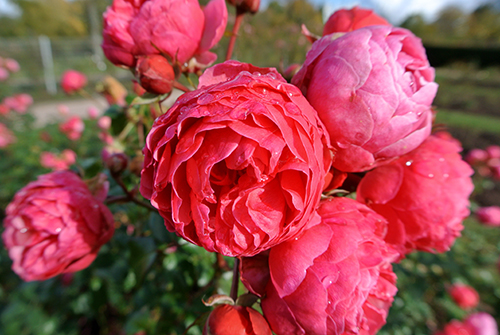
Plant care includes spring and autumn pruning of shoots, removal of faded inflorescences, top dressing and preventive spraying from pests and diseases. It is necessary to protect the bushes from direct sunlight to avoid burning out and drying out of the petals.
USDA frost resistance zone: 6b (up to minus 20 ° C). Despite the resistance to low temperatures, the plants must be hilled and covered for the winter (for example, with coniferous spruce branches). Before sheltering, the shoots are cut and the topsoil is loosened to provide air access to the roots of the rose.
Resistance to black spot is high, to powdery mildew - medium.
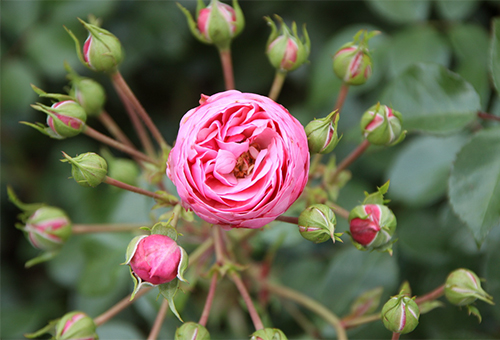
Advantages of the variety: abundance of flowering, a large number of shoots, endurance, good resistance to diseases and precipitation.
The disadvantages include burning out petals from the sun in hot weather and susceptibility to infectious burns.
Pomponella is a charming original rose with nostalgic flowers reminiscent of peonies. It is perfect for single and curb plantings, landscape compositions, mixborders and hedges. Looks great in combination with varieties such as ‘Piano’, ‘Ascot’, ‘Alan Titchmarsh’, ‘Leonardo da Vinci'and ‘Rosarium Uetersen'. Showcase the richness of pinks with companions such as 'Herzogin Christiana', 'Geoff Hamilton', 'Hans Gonewein Rose', 'Peter Paul Rubens' and 'Raubritter'. And to add lightness to the composition - the light-colored varieties 'Aspirin Rose', 'Artemis' and 'Bella Weiss'. Add sunny tones - 'Golden Border' and 'Amber Cover' roses.
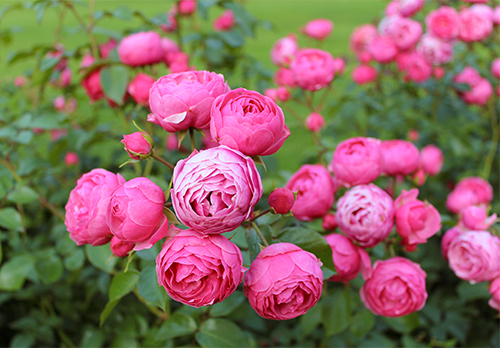
The unusual shape and abundance of flowers will fill your garden with bright colors and romantic charm.
Synonymous names: 'KORpompan', 'Pomponella Fairy Tale', 'Fairy Tale'.
Rose Pomponella Rewards:
2005 - a gold medal at the Geneva Rose Trials (Switzerland).
2006 - gold and silver medals of the Rose Competition in Baden-Baden "ADR Anerkannte Deutsche Rose Novelty Trials" (Germany).
2007 - a silver medal at the Kortrijk Rose Trials (Belgium) of the Rose Competition in Kortrijk.
2008 - Bronze test certificate for The Hague Rose Trials in The Hague (Netherlands).
2008 - test certificate of the competition of roses in Orleans "Orleans Rose Trials" (France).
2010 - silver test certificate of the competition of roses in The Hague "The Hague Rose Trials" (Netherlands).

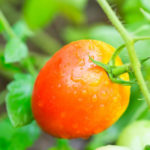
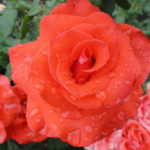
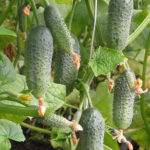
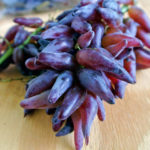
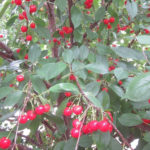



My husband gave me a seedling for March 8, he decided to make me a surprise instead of a bouquet. I read a lot of literature, felt all the responsibility for the future life of the plant. We live in Crimea, on the Black Sea coast. Our climate is warm. I kept the bush in wet sanitized sand in a cool basement. As it got warmer, around the beginning of April, I planted a seedling in the ground. I chose a favorable place on our site, based on the advice of familiar gardeners. For about two weeks, he took root, and I carefully looked after him. In the first year, the rose hardly bloomed. In the second, she pleased me with beautiful flowers. I couldn't stop looking! I will wait for next summer, waiting for her to show herself in the third year. Now I'm thinking about which neighbors to add to her. I would like to plant good varieties of roses in the garden for the southern territories. Tell me, who has this rose growing in the garden and with what companions?
I threw this rose away and do not regret it at all. I love roses with a classic bud shape and a normal size - Pomponella has a "ball" bud and is very, very small (up to 5 cm). The flowers are collected in brushes and look, in principle, not bad, but the bush is so large and powerful that small buds are lost against its background. This rose could not be represented as a "main" plant, so I decided to plant it as a companion, but it did not work out - it has a very large growth potential, and it quickly "scored" a neighbor. It is good to plant Pomponella in an unsightly corner that needs to be covered, or as a "screen" from neighbors. The only plus of the variety is its excellent winter hardiness (you just need to lay the plant on the ground and throw a piece of burlap on top, and it will winter well).